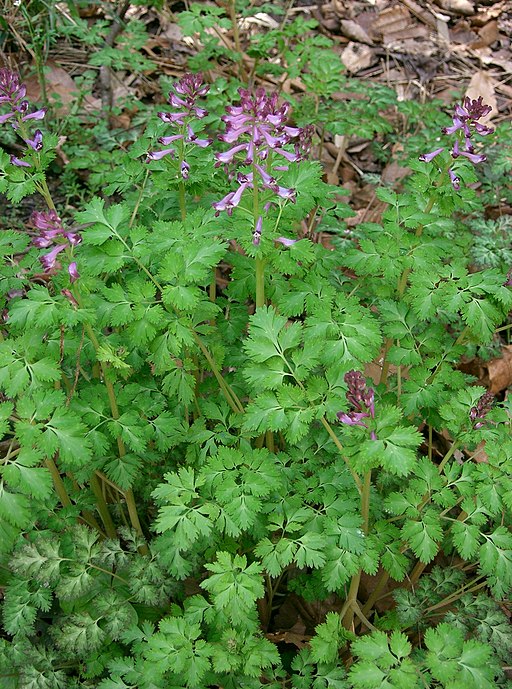How to recognize and report incised fumewort
About this Page
The purpose of this page is to share vetted observations of an early-phase invader, incised fumewort, with people throughout the National Capital Region. As of the date of this post, all 140 observations have been reviewed by the iNaturalist community, including at least one expert from the National Capital PRISM. We have reviewed the observations to make sure they meet the requirements for “Research Grade”, i.e. they are both properly identified and wild. It is our hope that these observations will support various agencies, NGOs, and members of the general public with developing strategies for managing this species before it becomes widespread.
About Incised Fumewort
Incised fumewort (Corydalis incisa) is an early phase invader in the Mid-Atlantic region. The species was assessed by USDA APHIS in 2017 and they concluded that this is a “high risk” invader, which means that it has both the potential to become widespread and the potential to cause a lot of damage. These facts are from the APHIS assessment:
“As demonstrated by its status in the United States, C. incisa exhibits a strong ability to escape and spread. It is a shade-tolerant (Fleming, 2017; Glick, 2017b) annual/biennial (Zhang et al., 2008) that is self-compatible (Zhang et al., 2009) and has a high reproductive capacity (Nakanishi, 1994). Plants ballistically eject seeds out of the fruit pods up to three meters away (Nakanishi, 1994). Seeds can then be further dispersed by either ants (Andruk, 2017; Zhang et al., 2008) or water (Atha et al., 2016a). U.S. evidence indicates that plants are likely being dispersed as contaminants in nursery material (Maurer, 2017). Plants are able to form dense patches and seem tolerant to hand-pulling and clipping at certain stages of their life cycle [Atha et al., 2016a; Atha et al., 2014b; Andruk, Hudson, and Nolan, unpublished data (provided by Andruk, 2017)].”
Two species of Corydalis are known to occur in our area: One is native and the other invasive. Flowering begins in late March, and the two species are easy to tell apart at this phase because the alien has purple flowers whereas the native has yellow flowers.

Corydalis incisa by KENPEI, CC BY-SA 3.0, via Wikimedia Commons
In winter only the evergreen foliage is apparent, but the species can be identified based on leaf morphology. In winter, petioles emerge directly from the root crown. In the illustrations below, we see two, whole, fumewort leaves. The petioles split into thirds, and each sub-petiole supports a leaflet. The terminal leaflets are shaded green. More-familiar species whose leaves split into thirds include clover and poison ivy. The leaflets are also divided into thirds such that each leaf contains nine sub-leaflets. In the illustrations, the right-hand sub-leaflet of the terminal leaflet is shaded dark green. In the alien species, some of these sub-leaflets are divided (all the way down to the vein) yet again, sometimes into two lopsided halves or sometimes into three parts (18 to 27 sub-sub leaflets). In the native species the sub-leaflets are lobed, sometimes deeply lobed, but not divided down to the vein (the limit is 9 sub-leaflets).
The easiest most reliable trick I can recommend for telling these two species apart (when flowers are absent) is to count the teeth (or lobe tips) on a sub-leaflet (dark green shading). The native species will have something like 5 to 7, and the alien will have two or three times that. Count the tips on the dark green sub-leaflets and see what numbers you come up with!

Line drawing of the two types of leaves by Sara Tangren, National Capital PRISM, CC BY
Please report incised fumewort if you see it. This is easy to do using the iNaturalist smartphone apps or through the webpage. You do not need to worry about adding your observation to our project page, that will happen automatically. Once we have reviewed your observation, usually within two weeks, your observation will also appear here.
How to make a high quality observation of incised fumewort
Take photographs that show:
- the landscape around the plant – this shows the context and offers a clue to the scale of the infestation
- if they are in flower, photograph a whole plant including flowers and leaves
- if they aren’t flowering yet, photograph a whole, typical, undamaged leaf
Make comments that:
- are explicit about the issue of intentional plant vs. weed vs. escaped
- give a rough estimate of the number of patches and the area covered
- provide any other details you think might be helpful




